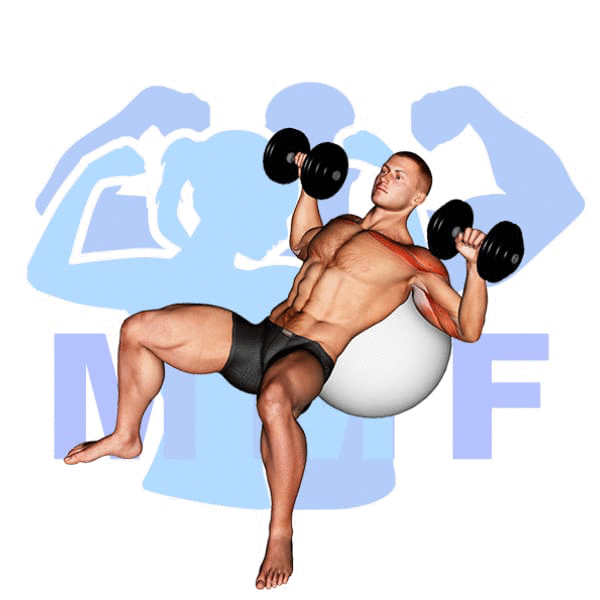Are you tired of doing endless sit-ups with no results? Are you struggling to tone your lower abs? It’s a common problem for many people. The problem isn’t necessarily the lack of effort or dedication, but rather a lack of knowledge in targeting the right muscles. Sympathy is in order because it’s not always easy to know which exercises to do to reach your fitness goals. But fear not, reverse crunches are here to save the day! In this post, we’ll dive into the benefits of reverse crunches and how to do them effectively for a well-rounded core workout.
Reverse Crunches Summary
- Primary Muscles: Rectus Abdominis
- Secondary Muscles: Obliques
- Equipment: Body Weight
- Mechanics Type: Isolated
- Force: Pull
- Utility: Auxiliary

Reverse Crunches Instructions
- Start off by laying on your back with your knees bent in a normal crunch position.
- Place your hands at your side on the ground for support.
- Roll your knees up to your chest to reverse a crunch.
- Then lower your legs back down, stopping before your feet touch the ground.
- Repeat the reverse crunches for a full set.
Video Tutorial
Reverse Crunches Muscles
Target (Agonist)
Synergists
Dynamic Stabilizers
- None
Stabilizers
- Deltoid – Posterior
- Latissimus Dorsi
- Pectineus
- Pectoralis Major – Sternal
- Rectus Femoris
- Sartorius
- Tensor Fasciae Latae
- Teres Major
- Triceps – Long Head
Antagonist Stabilizers
- None

Benefits of Reverse Crunches
Reverse Crunches are a great exercise for targeting the Rectus Abdominis muscle, also known as the “six-pack” muscle. This exercise works to strengthen and tone the abdominal muscles by engaging them in a controlled and dynamic movement. The benefits of performing Reverse Crunches include increased core strength, improved posture, and improved balance. Furthermore, Reverse Crunches can be used to target the midsection and reduce belly fat, resulting in a firmer and flatter stomach. Additionally, performing this exercise regularly can help reduce lower back pain and improve overall abdominal stability. With these benefits in mind, Reverse Crunches can be an excellent addition to any strength training or fitness routine.
Tips for Performing Reverse Crunches
Your at the right place if you’re motivated to enhance your reverse crunches performance. These tips can get you more from of this amazing workout, and help you reap all the benefits it has to give. You can develop your abs muscles, and even lower your risk of experiencing an injury. Let’s start now and discover what these suggestions may accomplish for you.
- Make sure your lower back is pressed against the floor – This helps ensure you are getting the most out of the exercise and prevents any strain or injury.
- Focus on contracting your core muscles – This will help engage the right muscles and make sure you are getting the most out of the exercise.
- Keep your movement slow and controlled – This will help increase the intensity of the exercise and help you get better results.
Benefits and Tips Video
Frequent Mistakes To Avoid
When executing reverse crunches, avoiding typical mistakes is usually the difference between a productive workout and a debilitating injury. Additionally, in order to maximize your benefits of the exercise, proper technique is critical. By preventing these frequent errors, you will raise your ability to achieve your desired results. But relax, it’s not as challenging as it might seem. By knowing the mistakes to avoid and taking the appropriate actions, you can execute the activity securely and effectively. So it is time for you to optimize the impact of this exercise and enjoy the benefits of a successful workout.
- Not engaging their core muscles – Without engaging their core muscles, people will not get the full benefit of the exercise, as the primary muscle group targeted is the abdominals.
- Not controlling their movement – People should control the movement and avoid jerking or swinging their legs, as this can lead to injury.
- Not keeping their lower back flat on the floor – Keeping their lower back flat on the floor will ensure they are engaging the correct muscles and not putting strain on other areas.
Find More Bodyweight Exercises Here
Variations and Complementary Exercises
If Reverse Crunches are not your thing, there are plenty of other exercises that you can do to work the same muscles. Here are some variations, complementary, or alternative exercises for Reverse Crunches:
Parallel Bar Leg Raise

The Parallel Bar Leg Raise is an excellent complementary or alternative exercise to Reverse Crunches. This exercise involves lifting your legs in the air while supporting yourself on parallel bars. It works the lower abdominals and hip flexors, which are important for developing a strong core. It also helps to strengthen the hip and lower back muscles, which are essential for maintaining good posture and stability. This exercise can be modified to make it easier or more challenging, depending on your fitness level. It is an effective way to tone and strengthen your abdominal muscles, as well as improve overall core stability.
Otis Up
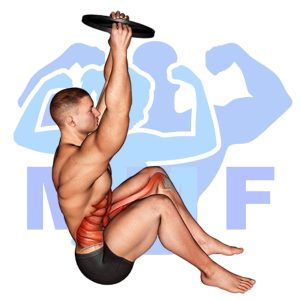
Otis Up is a great alternative or complementary exercise to Reverse Crunches. It helps strengthen the core muscles in the lower back and abdomen, while also working the glutes, hamstrings, and hip flexors. The exercise is performed by lying flat on the ground and pushing up with the arms and legs simultaneously. This exercise helps improve posture, balance, and stability. By performing Otis Up, you can target similar muscle groups as those used during Reverse Crunches, while also providing more variation and intensity to your workout routine.
Lying Leg Lift Hold
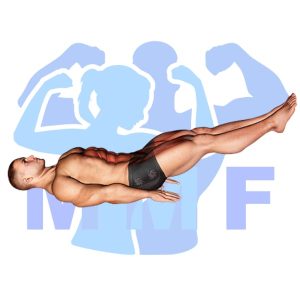
The Lying Leg Lift Hold is a great complementary exercise for Reverse Crunches, as it targets the same abdominal muscles. The Lying Leg Lift Hold requires you to lie on your back, with your legs straight and your feet slightly apart. From this position, you lift both of your legs until they are at a 90-degree angle with your torso, and hold the position for a few seconds before releasing. This exercise helps strengthen the core muscles, while also helping to improve balance and stability. When done in combination with Reverse Crunches, it can provide an effective abdominal workout that helps tone and define the abdominal muscles.
Check Out These Top Bodyweight Exercises
Lying Leg Crunch
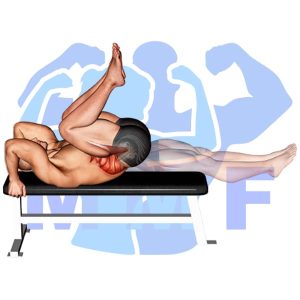
The lying leg crunch is a great complementary or alternative exercise to the reverse crunch. It targets the same muscle groups as the reverse crunch but adds an additional level of difficulty. During the lying leg crunch, you start by lying on your back and then lifting your legs towards your chest while keeping your lower back firmly on the floor. To make the exercise more challenging, you can add a weight plate or medicine ball. Doing this exercise will help to strengthen and tone your core muscles, as well as improve stability and balance.
Lying Knee Raise

The Lying Knee Raise is a great complementary or alternative exercise to the Reverse Crunch. It is a bodyweight exercise that works the lower abdominals and hip flexors. To perform the exercise, lie on your back with your arms at your sides, legs slightly bent, and feet flat on the floor. Lift both knees up towards your chest, with your lower back staying pressed into the floor. Lower your legs back to the starting position and repeat. This exercise is a great way to target the same muscles as Reverse Crunches without putting as much strain on your neck and upper back.
Lever Seated Leg Raise Crunch (Machine)
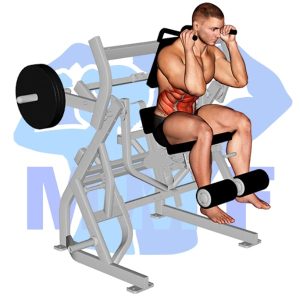
The Lever Seated Leg Raise Crunch (Machine) is a great exercise to complement or substitute for Reverse Crunches. This exercise works the same muscles as Reverse Crunches but with a different angle of resistance. It targets the lower abdominal muscles and the hip flexors in a seated position. To perform this exercise, the user sits on the machine with their feet hooked under the lever, then crunches up, holding the crunch for a few seconds before releasing. As with Reverse Crunches, this exercise should be done in a slow and controlled manner, focusing on proper form to get the most out of each rep.
Find More Abs Exercises Here
Opposing Complementary Exercises
In addition to Reverse Crunches, there are other exercises that you can do to further strengthen your core and the opposing muscles. These exercises will help you to develop a well-rounded core strength and better posture. Below are some exercises that you can incorporate into your routine to complement Reverse Crunches.
Barbell Good Morning
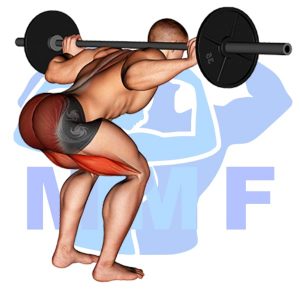
The Barbell Good Morning is a great complement to the Reverse Crunches exercise. This exercise works the opposite muscle group, targeting the lower back and hamstrings instead of the abdominal muscles. As with Reverse Crunches, it helps to strengthen the core muscles. However, it also helps to build strength in the lower back and hamstrings, allowing for greater stability and improved posture. By working these opposing muscle groups, Barbell Good Morning can help to improve overall balance and coordination.
Good Mornings With Bands

Good Mornings With Bands are a great complementary exercise to Reverse Crunches. Good Mornings With Bands activate the hamstrings, glutes, and lower back muscles, which are the opposing muscle groups of the abdominals that are targeted with Reverse Crunches. By using Good Mornings With Bands, you can effectively target the entire posterior chain, which helps to create a balanced core workout. Additionally, Good Mornings With Bands are a great way to increase strength and stability in the hips and lower back muscles, which can help improve posture and reduce the risk of injury.
Smith Machine Good Morning Off Pins
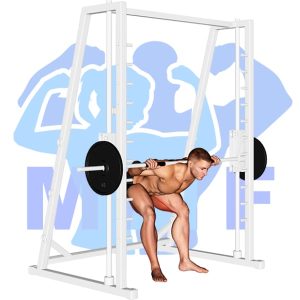
The Smith Machine Good Morning Off Pins is an excellent complement to the Reverse Crunches exercise. It works the opposing muscle group of the abdominals, the lower back and hips, which helps to prevent muscular imbalances. The Smith Machine Good Morning Off Pins allows you to use heavier weights and challenge your body in a different way than with the Reverse Crunches. This makes it an ideal exercise for those who are looking to take their core workout to the next level.
Get That Six-Pack With Reverse Crunches!
Get ready to say goodbye to that stubborn belly fat and hello to a toned six-pack with reverse crunches. This exercise targets the lower abdominal muscles, which are often difficult to isolate. Adding reverse crunches into your workout routine can help strengthen your entire core and improve your posture. Don’t forget, it’s important to pair exercise with a healthy diet to see the best results. Incorporate reverse crunches into your fitness plan and watch those abs start to pop!
References: Wikipedia | ExRx.net | PubMed.gov | Comprehensive List of Abs Bodyweight Exercises



